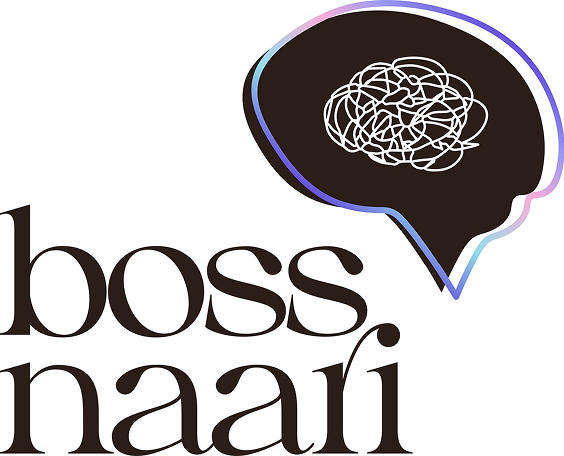Mental health counselling unmasked: what happens behind the scenes?
- Dnyanada
- November 10, 2023
Method in the madness
Therapy involves more than just active listening. I personally follow a basic framework in each psychotherapy process, which includes an
intake session,
setting objectives or goals,
implementing relevant counseling methodologies,
evaluating outcomes & concluding sessions
During the intake session, I establish an initial connection with the client. My focus is to understand the client’s therapy objectives and assess any history of psychiatric disorders or substance abuse. I also determine if the client’s objectives align with my expertise. For instance, addressing addiction or severe mental disorders often requires specialized training, and I may need to refer the client to a suitable practitioner.
After conducting the initial intake session, I formulate a counseling plan that aligns with the client’s goals. The duration of the counseling process is determined by the complexity of these goals, and I need to assess certain personality traits in the client, such as neuroticism, emotional avoidance, indications of childhood trauma, as well as the client’s level of openness and commitment to resolving their issues. Some of these personality traits may not be immediately apparent in the initial sessions, as individuals often feel hesitant to reveal their vulnerability and may conceal their genuine emotions with behaviours that they perceive as socially acceptable. Consequently, I make every effort to evaluate these factors during the intake session. Working collaboratively with the client, we reach a mutual agreement on a tentative plan that outlines the number of sessions and the specific sub-goals to be addressed during the counseling process.
The Counselling Framework
Once the initial plan is set, I employ a counseling framework to facilitate the client’s reflective thinking. I find Egan’s Skilled Helper Model particularly beneficial as it provides a structured approach to the process. This model divides the counselling framework in 3 phases
1. Phase I – Current scenario
2. Phase II – Desired scenario
3. Action strategies
Phase I - Exploring beyond the superficial
In the early phase, termed the “Current Scenario,” our primary goal is to establish a safe space where clients feel comfortable sharing their concerns openly. This phase is intentionally designed to create an environment conducive to clients expressing their thoughts and feelings without the fear of judgment. As a counselor, maintaining an unbiased and open-minded approach while listening to the client is crucial. There are moments when clients may hold back their true emotions due to their fear of being vulnerable. For example, take Akriti**, who expresses feeling undervalued by her colleagues, despite her competence and dedicated efforts. A deeper exploration of her story reveals potential self-doubt and a strong longing for recognition. Initially, Akriti might connect her issues directly to her colleagues during the early sessions, creating a perception that the problem is solely tied to them. However, a more thorough analysis uncovers that Akriti’s perspective is likely shaped by her past experiences, particularly a childhood marked by constant parental criticism. This upbringing might have led her to internalize feedback personally, seeing it as a reflection of her identity. The primary aim of this phase is to guide clients in examining their authentic emotions and aspirations while also helping them uncover any overlooked aspects in their perception of reality.
Phase II - A whole new world
Transitioning to the “Desired Scenario” stage involves centering the client’s genuine objectives and aspirations. During this phase, the counselor prompts the client to consider diverse perspectives, often encouraging them to view their circumstances from an external vantage point. For example, let’s revisit Akriti, who initially conveyed feelings of undervaluation at her workplace. Now, we delve deeper into Akriti’s heartfelt desires, envisioning her in a role that not only acknowledges her competence but also fosters a profound sense of fulfilment in her professional journey. My role as the counselor is to guide Akriti to explore potential solutions. While in the previous stage, Akriti might have contemplated addressing the issue by reporting to authorities or attributing blame to her colleagues, in this phase, she takes ownership of her need for validation and is open to ways to assert her needs within her professional environment.
Phase III - Go get it!
Moving into the “Action Strategies” phase, the client collaborates with the counsellor to explore practical steps towards achieving their goals. In Akriti’s case, this might involve finding constructive ways to communicate her needs to her colleagues.
Other psychological methodologies
Although the suggested model provides a clear plan, the truth is that difficult childhood experiences, not knowing oneself well, and deeply ingrained habits can make a therapy plan more complicated. It’s important to use cognitive restructuring techniques, mindfulness, or creative visualisation exercises to meet the different needs of the client. Also, conducting routine psychological assessments can help the person understand themselves better and see how their thoughts, actions, and core beliefs affect how they feel.
Feedback loops for better sessions
Evaluation and concluding sessions are important in the therapeutic journey, acting as the cornerstone for both client and therapist to assess progress, redefine objectives, and ensure the effectiveness of the employed strategies. Personally, I undertake regular evaluations every 6 sessions, which helps me to gauge the client’s evolving needs, allowing for spontaneous adjustments to the counseling plan. This process not only fosters a sense of accountability and transparency within the therapeutic process but also serves as a catalyst for empowering the client, enabling them to recognise their achievements and take ownership of their growth. Additionally, I prioritise a conclusive session, dedicated to discussing the client’s perception of their counseling journey. I value receiving feedback, as it enables me to enhance my practice and better serve my future clients.
Advocating for transparency
Within the realm of mental health, various stakeholders contribute to the influx of information, including researchers, experts, influencers, celebrities, and all those with a keen interest in the field. While this collective effort fosters a world where mental health concerns are acknowledged and public awareness is heightened, it underscores the pressing requirement for mental health professionals to champion the transparency of their working processes. The methods and tools we use aren’t magic; they’ve been studied in research facilities all over the world.
In my upcoming blog posts, I’ll talk more about the mental health resources I use to make therapy better for my clients. I’m all about being open and honest, so the client and I can work together on this journey.
Do you want to explore mental health therapy for yourself? Do not hesitate to take the first step. Book an introductory call to discover more.
**The name has been changed to protect the identity of the client
Liked what you read?
Sign up and get the latest blog posts delivered straight to your inbox.
We respect your privacy
Related Arcticles

Domestic Violence Among Indian Families and its Impact on the Brain
In Indian families, domestic violence often hides behind cultural norms. This blog reveals shocking statistics and its impact on the brain.

Grief Explained: How our brains process loss
Discover the emotional and neurological aspects of grief, how rituals aid in healing, and why it’s okay to take your time.

Craving Connection: A Scientific Look at Why We Feel Lonely
Dive into the neuroscience of loneliness and discover why our brains crave real connection.
